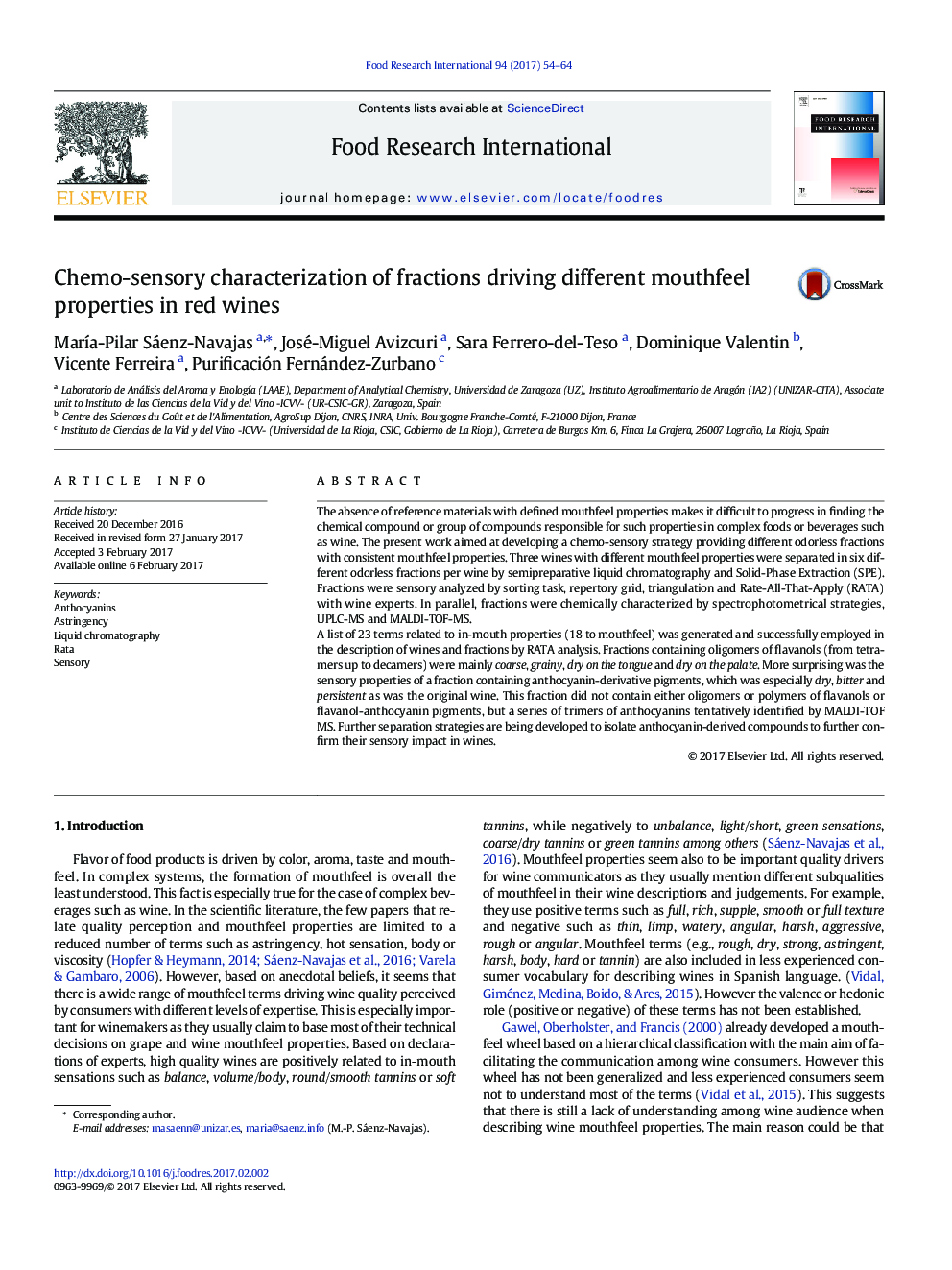| Article ID | Journal | Published Year | Pages | File Type |
|---|---|---|---|---|
| 5768285 | Food Research International | 2017 | 11 Pages |
â¢Fractionation method yields groups of compounds with different mouthfeel properties.â¢A list of 18 mouthfeel terms developed by sorting task, repertory grid and RATA.â¢Trimers of anthocyanins seem to drive wine bitterness, dryness and persistency.
The absence of reference materials with defined mouthfeel properties makes it difficult to progress in finding the chemical compound or group of compounds responsible for such properties in complex foods or beverages such as wine. The present work aimed at developing a chemo-sensory strategy providing different odorless fractions with consistent mouthfeel properties. Three wines with different mouthfeel properties were separated in six different odorless fractions per wine by semipreparative liquid chromatography and Solid-Phase Extraction (SPE). Fractions were sensory analyzed by sorting task, repertory grid, triangulation and Rate-All-That-Apply (RATA) with wine experts. In parallel, fractions were chemically characterized by spectrophotometrical strategies, UPLC-MS and MALDI-TOF-MS.A list of 23 terms related to in-mouth properties (18 to mouthfeel) was generated and successfully employed in the description of wines and fractions by RATA analysis. Fractions containing oligomers of flavanols (from tetramers up to decamers) were mainly coarse, grainy, dry on the tongue and dry on the palate. More surprising was the sensory properties of a fraction containing anthocyanin-derivative pigments, which was especially dry, bitter and persistent as was the original wine. This fraction did not contain either oligomers or polymers of flavanols or flavanol-anthocyanin pigments, but a series of trimers of anthocyanins tentatively identified by MALDI-TOF MS. Further separation strategies are being developed to isolate anthocyanin-derived compounds to further confirm their sensory impact in wines.
Graphical abstractDownload high-res image (215KB)Download full-size image
